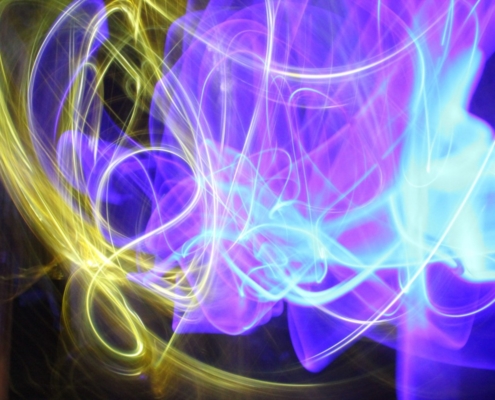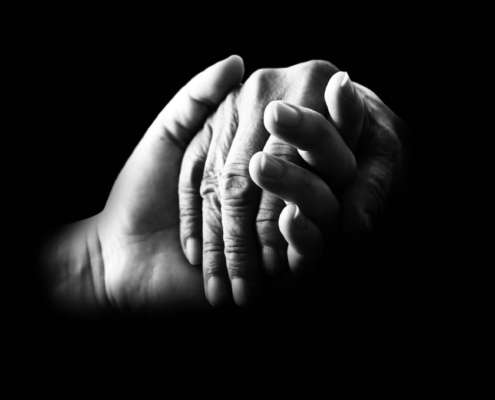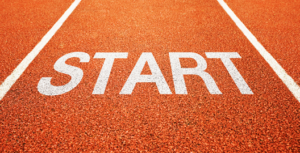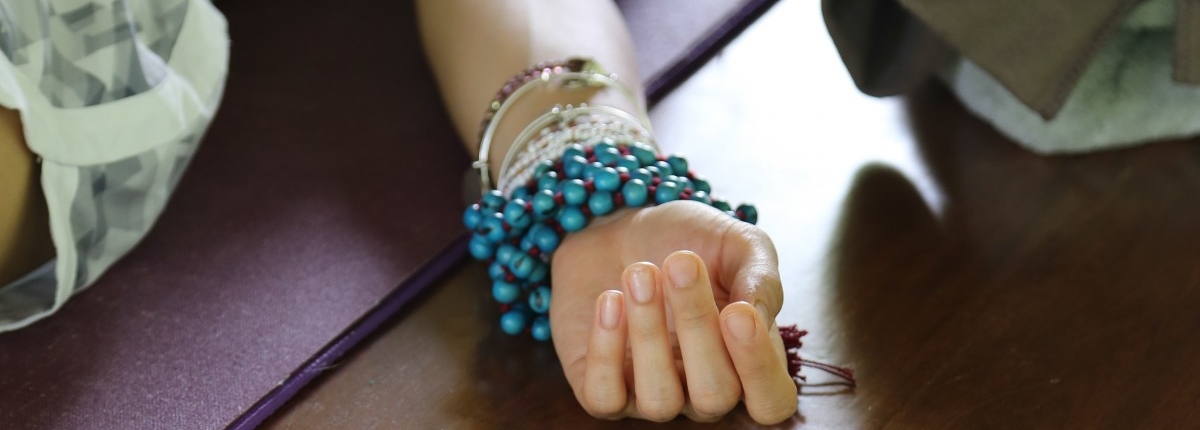 As we introduced in a previous post: Yogi Bhajan, a master of kundalini yoga and spiritual teacher for decades to thousands worldwide, taught a set of principles that he coined the Five Sutras of the Aquarian Age.
As we introduced in a previous post: Yogi Bhajan, a master of kundalini yoga and spiritual teacher for decades to thousands worldwide, taught a set of principles that he coined the Five Sutras of the Aquarian Age.
This edition of Soul Notes draws to a close our 5-part series, with this one devoted to Sutra #5: “Vibrate the cosmos. The cosmos will clear the path.”
“Vibrate the cosmos. The cosmos will clear the path.”
[Sutra 5, Yogi Bhajan]
This sutra is a call to action.
Everything is in motion
Everything is moving. It’s all energy (and matter). Everything and everyone is vibrating at its own frequency. We’re a human body full of molecules (as is the chair you are likely sitting on right now) and all is moving as we live on a living planet that’s also moving. The earth is orbiting the sun. The moon is orbiting the earth. I love those “you are here” photos taken from space. It helps to take this larger view. It reminds us that with the cosmos comes expansiveness and limitless possibilities.
Ready and awake
For the most part, animals in the wild often remain still, lying in wait. They reserve their energy by springing from and then returning to a natural, neutral state. When the time is right, they spring into action. They do so at just the right, intended moment.
Are we humans that much different? Wouldn’t we also benefit from springing from and returning to our own natural, neutral state? Neutral does not mean passive! It does not mean stagnation. It is not a state of non-awareness. Quite the contrary. It’s a state of full alertness. It’s being truly awake to all that’s around us!
Tip: Setting aside time for a daily practice furthers and facilitates this state of what I would call “alert neutrality.” Some forms include: meditation, prayer, quiet reflection, observation, writing in a journal. For the benefits of a daily practice and some examples, go here.
Spring into action and make waves!
Like the strings of an instrument, be it a violin or guitar or a banjo — and whether it be by way of plucking, picking, or strumming the strings — each sends off a unique vibration.
Our own voices provide a channel. We each have our own built-in vibration creator! Chanting, humming, singing, they all carry their own vibration, too. And, whether you’re on your yoga mat, in the shower, or in your car – use your voice, and vibrate to your own private cosmos! This will raise your own frequency, and in turn will impact those with whom you interact throughout the day.
It’s as if we’re knocking on Cosmos’s door, and saying with confidence, “Hey there, Cosmos! Bring it on! I’m ready! Clear the path! Let’s go!”
Remember that you may always return to a neutral state. Reserve and extend your energy wisely. Refresh, regroup, and reset. We don’t always need to be clearing a new path. When we are ready, though, we know what to do – vibrate the cosmos, and the cosmos will provide!
Lighten the load – raise your vibration
Again, a daily practice plays a helpful role in getting you back to a neutral state and in tune (pun intended) with what you desire to set in motion. What is it that you’d like the cosmos to clear the path for? What burdens are weighing you down, that when lifted, will raise your vibration?
From a place of inspiration and divine wisdom, set the vibration and then let go. Trust the cosmos to clear the path for you. When activated, your desires set in motion the future you intend to create. Your thoughts and your words hold their own vibrations, too. You get to decide which ones you embrace, and which ones you discard. With this (e)motion set in motion, you’re primed to take inspired action. That one action in turn creates another, and another, and so on, and so on. The ripples continue on, creating the desired results.
That is not to say that you’ll be able to control all other vibrations coming toward and all around you! It is to say, however, that you get to decide which tune you wish to play.
“When you pray, move your feet.” – African proverb
In conventional society, we’re often told “not to make waves.” And, “don’t rock the boat.” Phooey! This Sutra gives us permission – in fact, encourages us – to do precisely that. Ocean waves, sound waves, waves of light — nature is full of waves that carry energy with them. So too, shall each of us. During these enlightened times, the yearning, the impulse, is there. We no longer feel satiated by staying in one place. We feel the urge to raise our vibration. That’s the build-up of pressure that is ready to be released. (For tips on starting, so that the pressure will be off, go here.)
So, here we go:
Stir things up! Shake things loose! With your archer’s bowstring, pull back your arrow and let ‘er fly! The time is now.
Okay, your turn:
Are you ready to vibrate the cosmos? What path do you intend to clear? What are you sending out? Are you vibrating at the frequency of love? Of service? Of loving service?
I invite you to share your thoughts, feelings, and experiences in the Comments section, below. Soul-to-soul!

 Ready for another of Yogi Bhajan’s 5 Sutras?
Ready for another of Yogi Bhajan’s 5 Sutras?




 A daily practice could be: meditation; focusing on your breathing; reading; journaling; or visualization exercises. Or, it may involve being outside or in nature. What’s important is that your daily practice be done with a sense of reverence for the sacredness in it, and your self-honoring commitment to taking some dedicated time, just for you – to exploring what’s meaningful for you in your life, and how you wish to show up in it.
A daily practice could be: meditation; focusing on your breathing; reading; journaling; or visualization exercises. Or, it may involve being outside or in nature. What’s important is that your daily practice be done with a sense of reverence for the sacredness in it, and your self-honoring commitment to taking some dedicated time, just for you – to exploring what’s meaningful for you in your life, and how you wish to show up in it. As my kundalini yoga teacher says, just “making it to the mat” may be the most important step in any consistent yoga practice.
As my kundalini yoga teacher says, just “making it to the mat” may be the most important step in any consistent yoga practice. Why the early morning hours? Known as the ‘ambrosia hours,’ the early morning hours signify when the world is quiet and fluid.
Why the early morning hours? Known as the ‘ambrosia hours,’ the early morning hours signify when the world is quiet and fluid.